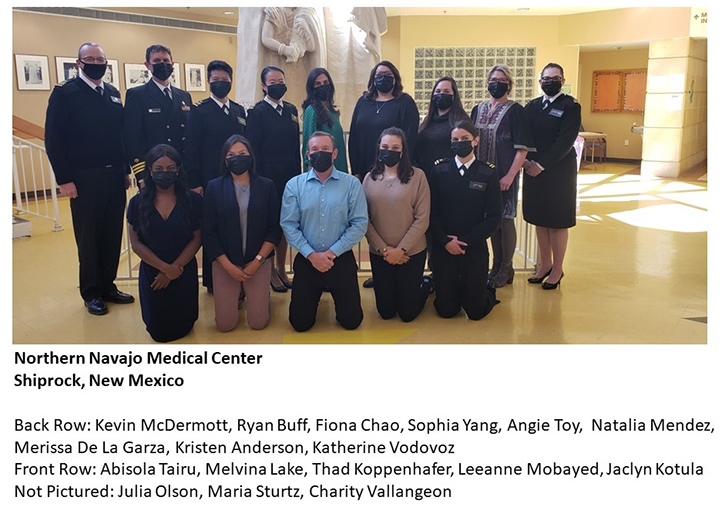Kevin McDermott, Pharm.D., BCPS, BCACP; Sophia M. Yang, Pharm.D., BCPS;
Katherine J.Vodovoz, Pharm.D., BCPS; Leeanne Mobayed, Pharm.D.; Merissa De La Garza, Pharm.D.
Northern Navajo Medical Center
Shiprock, New Mexico
Research suggests that an additional 14,900 to 35,600 primary care physicians and 37,400 to 60,300 non-primary care physicians will be needed in the U.S. by 2025. In response, pharmacy scope of practice has expanded over the years to help reduce the provider gap. However, rural settings continue to provide unique challenges for accessing health care. For decades, our program has established pharmacists as primary care providers to assist with shortages and in recent years has significantly increased pharmacists’ scope of practice. In addition, our facility has granted diagnostic privileges to specially trained pharmacists so that they can be used as providers in walk-in clinics. To prepare pharmacists for these broader roles in patient care, a physical assessment training course was developed.
Pharmacists can act as force multipliers within specialty care. At the Northern Navajo Medical Center (NNMC), pharmacists have been involved in caring for patients in the epilepsy clinic since 2007. In 2013, pharmacists transitioned to a direct provider role performing all aspects of care, including performing neurological examinations. Since 2013, a total of 326 patients with epilepsy have been followed by pharmacists, resulting in 1,516 total visits. Total patient appointments conducted by pharmacists in this clinic has increased from 141 per year in 2013 to 269 per year in 2019. In January 2019, pharmacists began training with the rheumatologist to evaluate patients with rheumatologic diseases, primarily those with rheumatoid arthritis (RA), with the focus on guideline recommended monitoring of methotrexate (MTX). In the first year of the clinic, pharmacists evaluated 44 unique patients in 77 visits for MTX monitoring and demonstrated higher rates of guideline monitoring compared with primary care (79% versus 58%, respectively). To assist with pharmacy expansion, an intensive 60-hour pharmacist physical assessment course was created in 2017. In addition to core physical assessments (abdominal; cardiac; head, ears, eyes, nose, throat (HEENT); musculoskeletal; pulmonary; neurological), modules were created to include the evaluation of acute abdominal pain, headaches, lower back pain, chest pain, and knee pain. Since 2017, 65 pharmacists from three federal agencies have attended seven courses. In 2016, pharmacists were asked to assist with provider shortages in walk-in clinics and use the profession as diagnostic providers. During this time, pharmacists have been responsible for evaluating almost 2,500 patient visits with expansion to full-time providers in same-day clinics.
The pharmacy department demonstrated that pharmacists can provide specialized chronic care, as well as serve as diagnostic providers for acute and chronic complaints in same-day clinics. These services can be accomplished with appropriate training, including an intensive physical assessment course.

